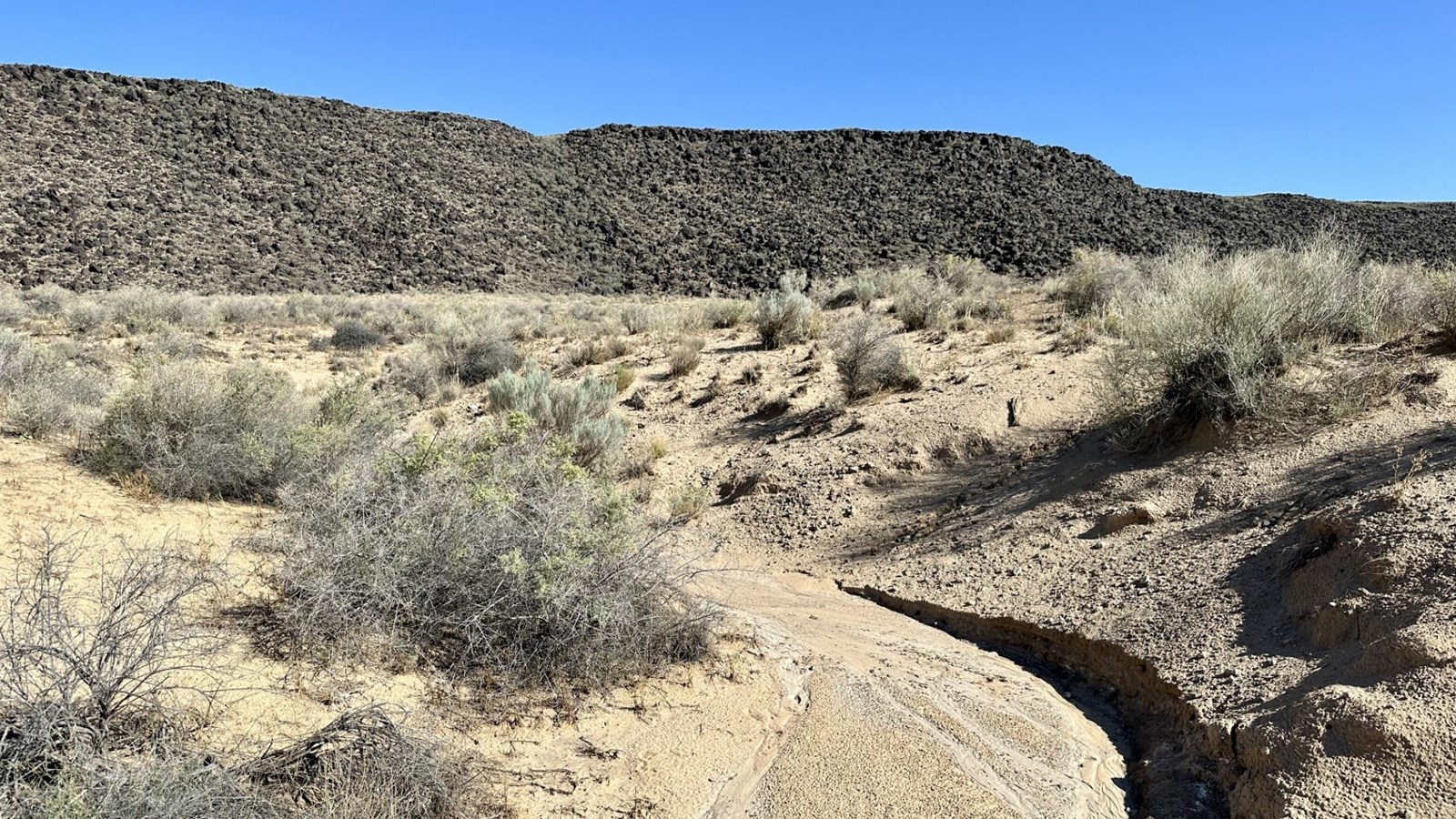Last updated: September 26, 2023
Place
Rinconada Canyon Stop 13

NPS Photo
Audio Description, Cellular Signal, Scenic View/Photo Spot
Audio Tour Stop #13: The Rio Grande Rift Valley and the Sandia/Manzano Mountains
(1.76 miles / 2.83 km– on return trail)
As you approach the end of the trail, the scenic views provide an excellent opportunity to appreciate the broader geologic context that laid the foundation for the unique landscape we have today. The Rio Grande River and the Sandia Mountains may appear far away from where you are standing, but they are connected to Rinconada Canyon by a huge regional feature: the Rio Grande Rift.
The Rio Grande Rift is one of the few examples of rift zones on Earth today. Rifts are areas of stretching, where the Earth’s crust is pulling apart and getting thinner. Here, the crust is being stretched East to West. This stretching caused a rift that starts in Southern Colorado and runs South through the middle of New Mexico.
The formation of the Rio Grande Rift began around 30 million years ago and has dramatically changed the landscape in that time. When rifts occur, the sides of the rift go up to form mountains, while the middle drops down to form valleys. The Sandia mountains you see to the east are the eastern edge of the Rio Grande Rift, where granite over 1 billion years old and limestone from 300-million-year-old seas have been pushed up into the sky by the force of the rift. Meanwhile, the valley where Albuquerque sits dropped down away from the rising mountains. Petroglyph National Monument sits near the middle of the Rio Grande Rift. Another impact of this large-scale stretching was the formation of cracks in the Earth that follow the North-South pattern of the Rift. These cracks allowed magma to bubble up to the surface and create the line of volcanoes that formed the West Mesa.
Without the Rio Grande Rift, there would be no volcanoes here. And with no volcanoes, there would be no basalt boulders. Without the basalt boulders, there would be no petroglyphs. The story of Petroglyph National Monument is and always has been one of humans, animals, plants, and geologic forces interacting in an ever-evolving landscape.
